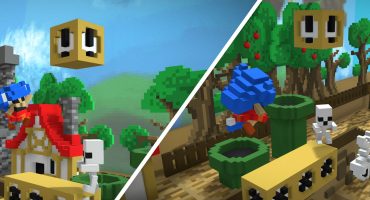About
Hey people, I’m Alex Hagen, a 3D character artist from Bologna, Italy. My life is made and was made of a whole lot of choices, one of which was to become either a character artist or an environment artist, so I chose the first one, which almost came naturally.
I studied at the Academy of Fine Arts of Bologna and since then I started working in the 3D industry as a generalist. I’m a self-taught artist and a great part of my formation has come from books and online courses, as well as techniques and workflows. Polycount was one of the best mentors in working with different pipelines, as I noticed many professionals of the industry granted you free knowledge.
Since I received some criticism from the companies I’ve applied to about doing few realistic characters, I decided to spend some time on improving this aspect of my work, and Alec is one of my practice pieces.
Inspiration
The idea itself came when I started messing around the internet, especially Aliexpress and Machine50/60, both of which provided neat cloth inspiration. In the end I decided to make him look like a graffiti artist; the concept was kind of sophisticated for just a graffiti artist, so he would be more the sci-fi version of somebody who infiltrates large corporations and messes with the cybersecurity. Of course, he would have at least a helmet, because punks never show themselves.
Modeling
The process itself was pretty straightforward; after picking a random male for the base mesh, I decimated everything and then imported it into Marvelous Designer, so that I might have a really low poly male to use as a reference. I created the basic pattern and then, once I was happy with the overall look, reimported everything into ZBrush.
The clothing patterns were all gathered from Pinterest and they are your basic hoodie and bomber jacket pattern with some minor add-ons, like some pockets here and there, because you can never have too many pockets for your pants.
The final detailing was entirely made in ZBrush—it’s actually easier to add stitches and buttons directly in ZBrush than in Marvelous. So the rest of the straps were positioned and the high poly version of the fella was imported, too. At this point, once everything was set out, I had to retopo everything to make it “usable”. I used Topogun, a nifty tool for fast and optimal results.
UVs, Materials, and Texturing
Once my low poly was finished and separated into multiple objects, I unfolded them with Unfold3D, and then reimported everything into Maya, where I put different materials on each UDIM. I noticed that Substance Painter works faster and better when you do separate materials before importing everything; the baker is more precise and stitches are less prominent on the model, even if you have a low dithering.
Substance Painter was the real deal. With the new update, baking got a whole lot easier and the process sped up from 5 hours of baking to, literally, 5 mins. Texturing was really straightforward; I had to remodel the jacket a bit because some things were offset, but all was good.
Rigging
Unfortunately I’m not a rigger, but I have two or three tricks up my sleeve. If the model is correctly set and, even if he is not in a T-Pose but in the A-Pose, Mixamo will recognize it and put a basic rig in him. Of course, it’s not perfect, but it’s easy enough to mess with it and obtain something nice. That is why I then rendered some frames in Octane Renderer.
Export to Sketchfab
So, after rigging it, after making some spray cans and after all the early mumbo jumbo, I decided to do a separate export for all the objects: I had 4 UDIMs for Alec, 2 UDIMs for the Drone and another UDIM only for the ground and spray cans. I love that you can tweak the material settings within Sketchfab and I ended up using this feature to replace the glass material for the drone’s lenses. Most of all I had a lot of fun with the lights in it. Coming from V-Ray and other renderers, usually setting up some spotlights is pretty hard and shadows are such a pain to achieve—you may need global Illumination, soft or hard shadows and of course lots of samples to make it more believable.
This was not the case in Sketchfab. Simple as that with two clicks and three rotations, crunchy lights, tone mapping and a little bloom with subtle sharpness and very little chromatic aberration, gave Alec the perfect cyberpunk feeling, the constant feeling of being followed and observed by an unknown identity.
All in all Sketchfab became a wonderful tool to have at every moment. Fast and easy to use.











